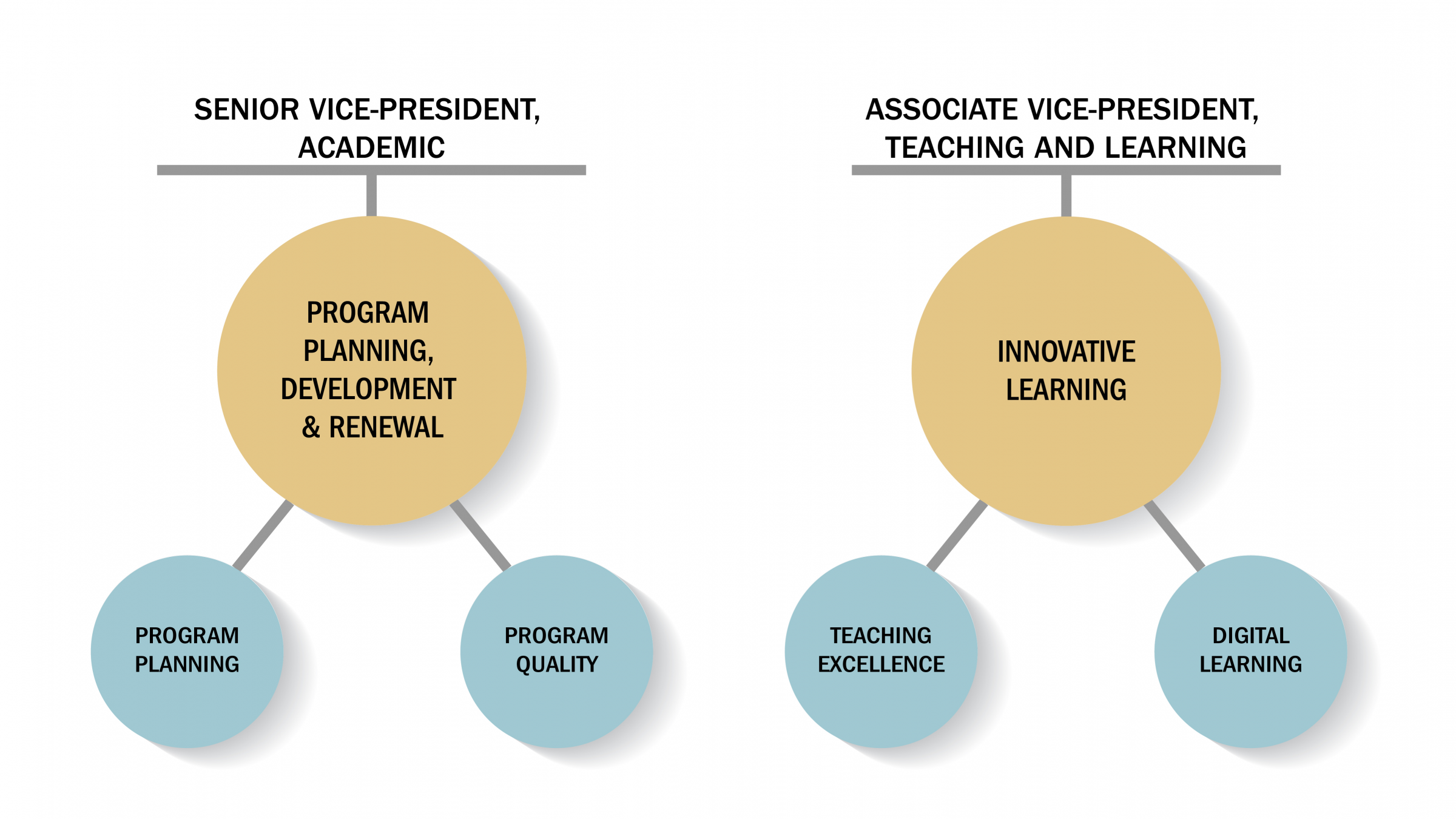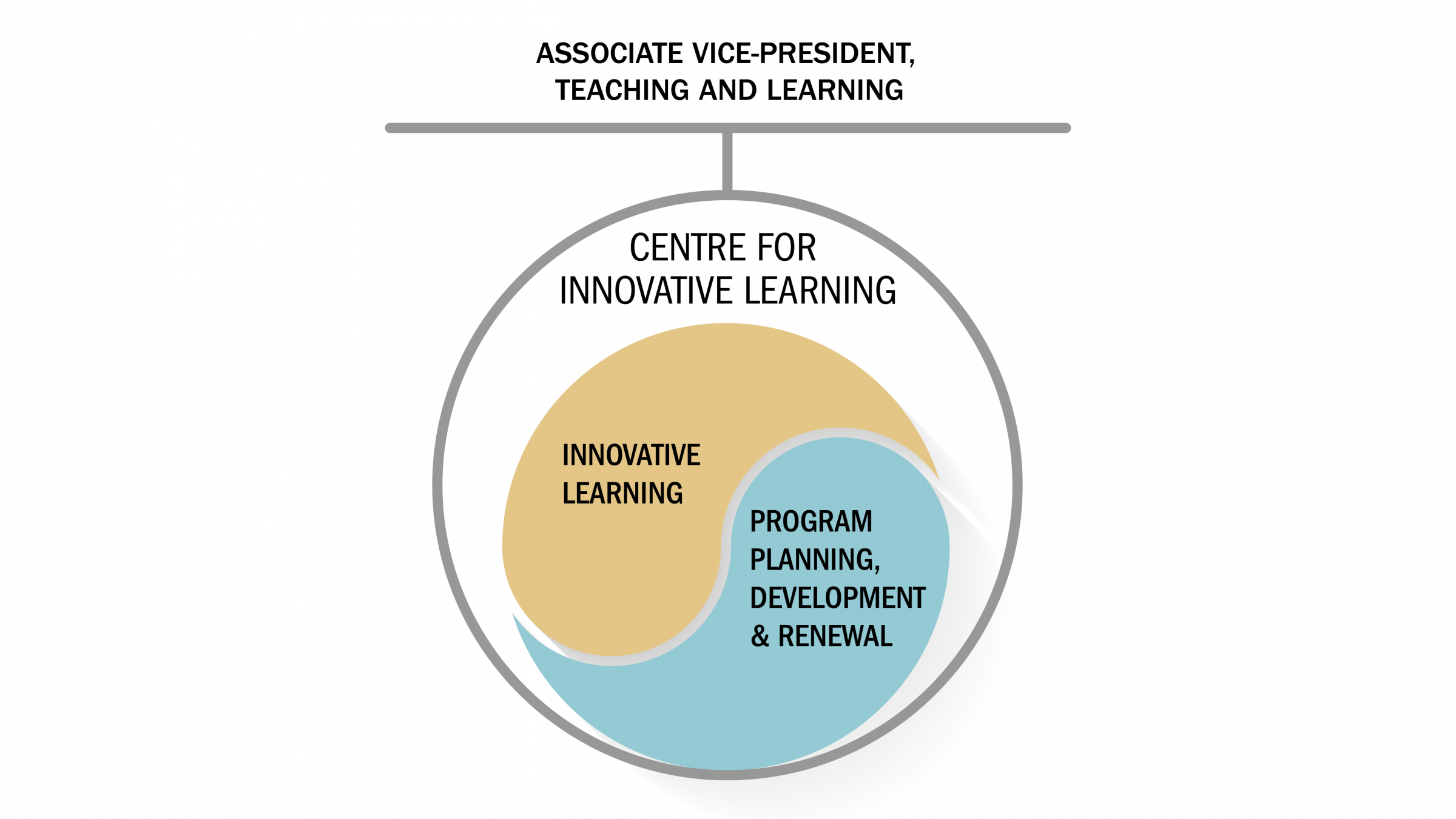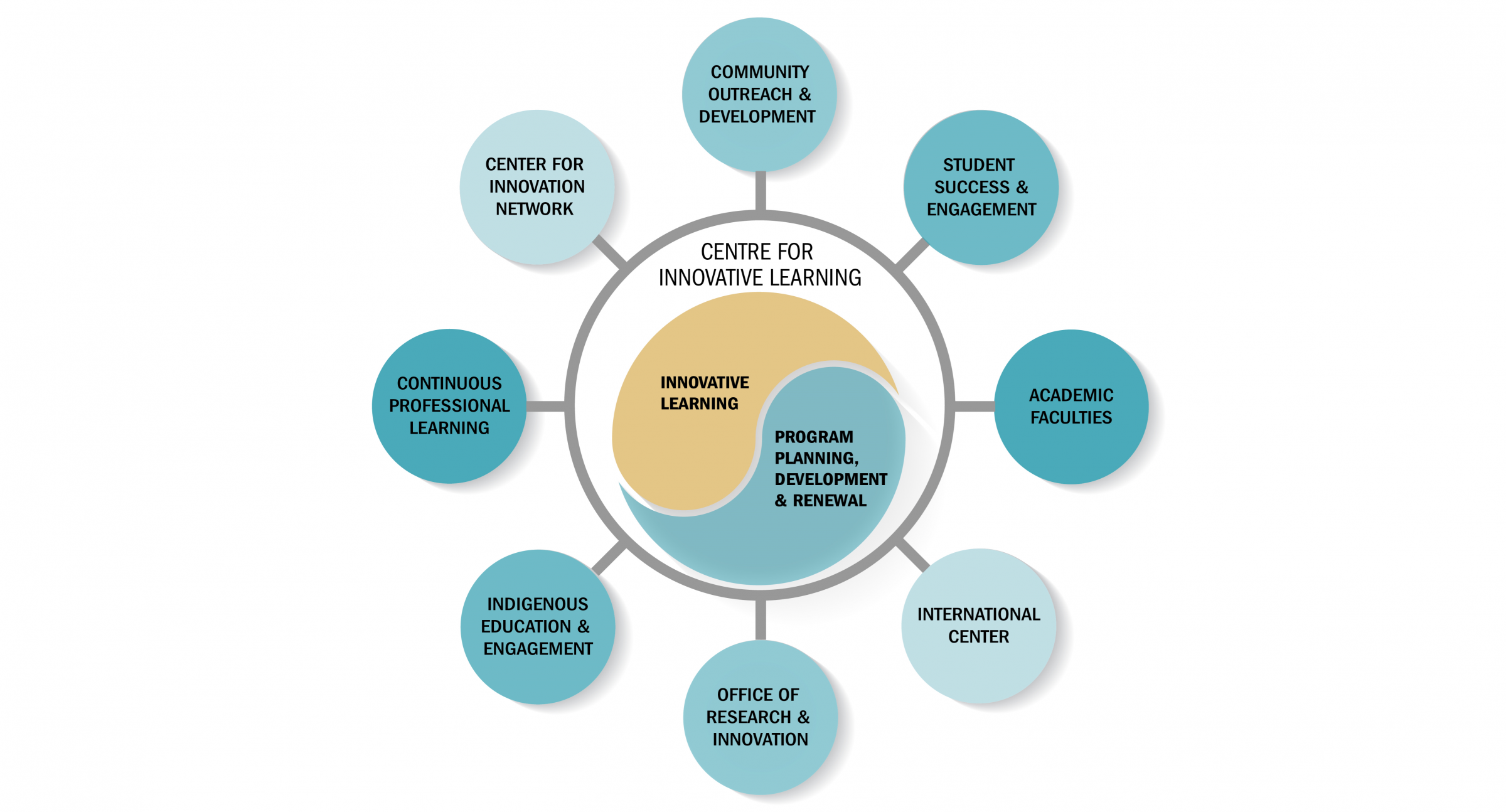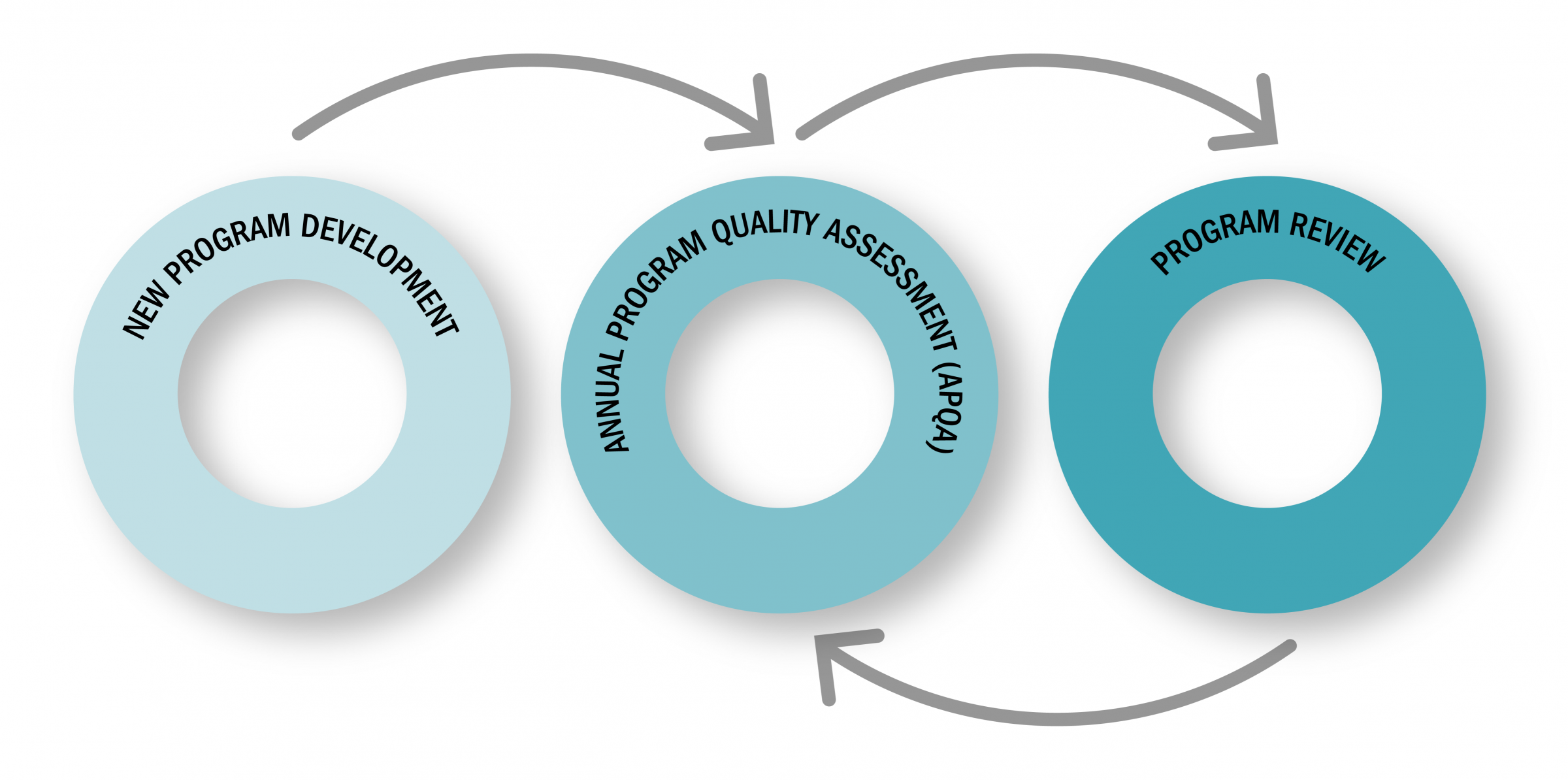Building a Quality Culture

Humber College Institute of Technology and Advanced Learning is a publicly funded college serving over 30,000 full-time students in the Greater Toronto area. We support over 200 full-time programs that range from one-year certificates and Ontario diplomas to honours bachelor degrees and Ontario post-graduate certificates. One quarter of all students in college degree programs in Ontario study at Humber (Humber College Institute of Technology and Advanced Learning, n.d.).
Humber’s strategic plan (2018) defined the vision to “lead the province in developing programs, credentials and pathways that enhance student choice, mobility and access to higher education” (p. 15). We aspire to “empower students by transforming the learning environment to offer more choices in how, what, when and where they learn.” These goals build upon our approach to polytechnic education in which we leverage our strong connections to industry to create opportunities for student experiential learning, including work-integrated learning and applied research. Humber offers a wealth of learning pathways to help students progress into and through degree and graduate certificate completion. Drawing on this strength, Humber has committed to developing new pathways and institutional collaborations to improve access to postsecondary education and enhance student mobility across Ontario.
In 2021, we took stock of Humber’s progress and evaluated the impact of the COVID-19 pandemic, producing Humber Tomorrow: Strategic Priorities and Actions. We assessed aspects of online and hybrid learning that were effectively supporting learners, and identified areas where greater supports were needed. The pandemic highlighted the need to design and deliver education with planned flexibility. Further, Humber committed to developing a suite of continuous professional learning programs and microcredentials that focus on skills acquisition. These approaches rely on competency-based assessment of learning and serve to fill in skills gaps with targeted learning experiences that support industry needs.
These goals highlight Humber’s view that education must innovate to provide greater flexibility and personalization for our learners. This requires changes in the way we structure programming, with a focus on modularization and multiple entry and exit points. However, for true innovation, program changes must be paired with new approaches to teaching, learning, and assessment. Thus, programming innovation and teaching innovation must be linked and coordinated to meet our strategic mandates.
Where We Began
To support Humber in this transformation, academic leadership focused on two areas: program planning development and renewal (PPDR) and innovative learning (IL). The two areas have formal responsibilities for program and faculty development across all six of Humber’s Academic Faculties. PPDR is focused on the development of quality programming, ensuring that we align with ministry requirements and outcomes. The team collects and reports on our performance metrics and supports programs in their annual reviews and development of action plans. IL facilitates the development and enhancement of teaching across the institution by supporting faculty in designing, developing, and delivering course curriculum and connecting them to the tools and technology they require. IL’s focus is on professional learning needs and developmental strategies to ensure that faculty are prepared to deliver student-centric curricula.
Figure 1: Initial Structure

Initially, these areas were siloed with separate reporting structures. The PPDR team’s actions were disconnected from the IL team’s faculty development activities, and IL faculty development initiatives were planned without clear line of sight into program development plans for the coming year. Each team had successes, but there was inconsistent engagement with IL and PPDR across the college and, therefore, equally inconsistent adoption of best practices. Although both teams were supporting important work, there were missed opportunities for collaboration. The silos created blind spots, which decreased our effectiveness in providing thoughtful faculty resources and workshops to support important strategic changes in program offerings. Further, our approach to quality was more strongly focused on reporting and meeting external ministry requirements than on guidance for transformative change.
What We Changed
The Centre for Innovative Learning (CIL) was designed to bring areas with responsibilities in program development and faculty development together. This integration is meant to enhance Humber’s ability to provide 360-degree supports for our changing program, faculty, and strategic needs. The two departments now report to the same strategic lead and are co-located within the same physical space. This enables formal and informal discussions among team members and creates opportunities for shared learning and priorities. The goal was to shift away from a view of quality as compliance toward one of quality as the fabric of Humber’s culture. We seek to inculcate a process of continuous improvement and intentional self-reflection that is integrated and foundational across the institution.
Figure 2: Centre for Innovative Learning

The CIL also serves as a hub for the Humber community. We provide a place for collaboration across the institution, support conversations to identify and develop alignment across areas, and work together to energize and mobilize innovative and evidence-informed practices. Figure 3 showcases some departments that are connected to and supported by the CIL. In fact, we are co-located with the Office of Research and Innovation as well as members of both Indigenous Education and Engagement and Continuous Professional Learning. The teams and departments contribute key deliverables in Humber’s vision; contributions are enhanced by working with faculty developers and program development experts in the CIL.
Figure 3: Centre for Innovative Learning Ecosystem

Impact: Changes to Support a Quality Culture
Senior leadership at Humber created the Cross-Institutional Quality Enhancement Committee to lead quality culture initiatives across the college. An early opportunity for quality enhancement was through Humber’s preparation for an institutional audit. The committee ensured broad consultation and sharing among the college stakeholders contributing to the audit. This included representation from each of the academic Faculties, the Registrar’s office, Facilities, and all areas of student and campus services. The aim was to help each committee member to understand the role of their department in the audit process and in building a quality culture at Humber, and also how contributions from other areas supported the institution as a whole. The committee sought to instill high-level institutional knowledge across the entire team. The audit was a significant success, with external audit panel members commenting on how the college was able to mobilize “the creative energy and intellectual capital of the entire institution to create and support” building “an impressive, comprehensive, and therefore ‘mature’ quality assurance model” (Ontario College Quality Assurance Service, 2022, p. 4).
Humber’s 2023-2026 academic plan builds upon the quality culture foundation. The plan has three strategic priorities:
- Program and pathways for lifelong learning
- Personalizing the learning journey
- Empowering teaching and learning at Humber
The priorities focus on developing new programs and pathways, building flexibility into program structures and delivery, and enhancing faculty capacity in areas of strategic change. The CIL has partnered with leaders in each Academic Faculty to achieve these goals, and the coordination and collaboration between the two CIL teams is viewed as a key component to our success.
The impact of close collaboration between the two areas of the CIL was further demonstrated in spring 2023. In March 2020, Humber launched an institutional learning outcomes framework—Humber Learning Outcomes (HLOs)—just prior to moving to primarily online delivery in response to the COVID-19 pandemic. After the college community returned to campus, the CIL teams moved forward with the integration of HLOs into every course and program at Humber. We took a measured step-by-step approach to engaging with academic leaders to determine how to begin the first stage of the implementation process: mapping the HLOs across program curriculum. As a result, faculty meetings were arranged for the spring semester during which all teaching teams had an opportunity to reflect on where the HLOs were already being taught in courses and where there were opportunities to incorporate them into curricula more explicitly. Once the HLO program maps were completed, they were added to courses in Humber’s course outline software tool. The aim was to ensure that faculty would not only have HLOs clearly identified for their courses, but also have opportunities to collaborate on ways to deepen student learning in these critical areas. By coordinating our efforts, we are well on the way to having an HLO map for every program and HLO icons on every course outline at Humber.
Lessons Learned
In reflecting on the journey Humber took to create the CIL, we have identified a number of key lessons learned. First, support of senior leadership is critical to making an organizational and cultural shift. Second, even with strong leadership, cultural changes take time and require continuous focus and attention. Third, ongoing communication and engagement across the institution through the creation of the Cross-Institutional Quality Culture Committee was a significant component to our success.
Future Goals
We continue to look for new ways to bring teams together and work strategically in support of Humber’s Academic Faculties and the institution as a whole. CIL leadership has committed to making consultation, collaboration, and reflection a key component of every IL and PPDR process. The success of the first phase of the HLO implementation points to how effective and impactful this coordinated effort can be.
Figure 4: CIL Program Life Cycle and Continuous Improvement

As we move forward with Humber’s academic plan, the CIL will be a key leader in the coordination of action plans and teams. We will collect data on our progress with a view to continuous improvement and quality assurance across the institution. Ultimately, the aim is for our institutional commitments to quality to transform teaching and learning at Humber, and through this transformative process, to provide an exceptional and flexible learning experience for students.
References
Humber College Institute of Technology and Advanced Learning. (2018). Lead, transform, differentiate: 2018-2023 strategic plan. https://humber.ca/strategic-plan/assets/documents/2018-2023-strategic-plan-complete-accessible.pdf
Humber College Institute of Technology and Advanced Learning. (n.d.). Understanding credentials, degrees. https://humber.ca/future-students/understanding-credentials/degrees.html
Ontario College Quality Assurance Service. (2022). College quality assurance audit process (CQAAP) audit report: Humber College. https://www.ocqas.org/wp-content/uploads/2016/04/HUMB-Executive-Summary-Oct_20_2022.pdf
Lead image: Centre for Innovative Learning Teams with Humber Learning Outcome Icons
Vera Beletzan is Associate Vice-President, Teaching and Learning; Dawn Macaulay is Dean, Innovative Learning; and Nichole Molinaro is Dean, Program Planning Development and Renewal, at Humber College Institute of Technology and Advanced Learning in Toronto, Ontario, Canada.
Opinions expressed in Leadership Abstracts are those of the author(s) and do not necessarily reflect those of the League for Innovation in the Community College.




